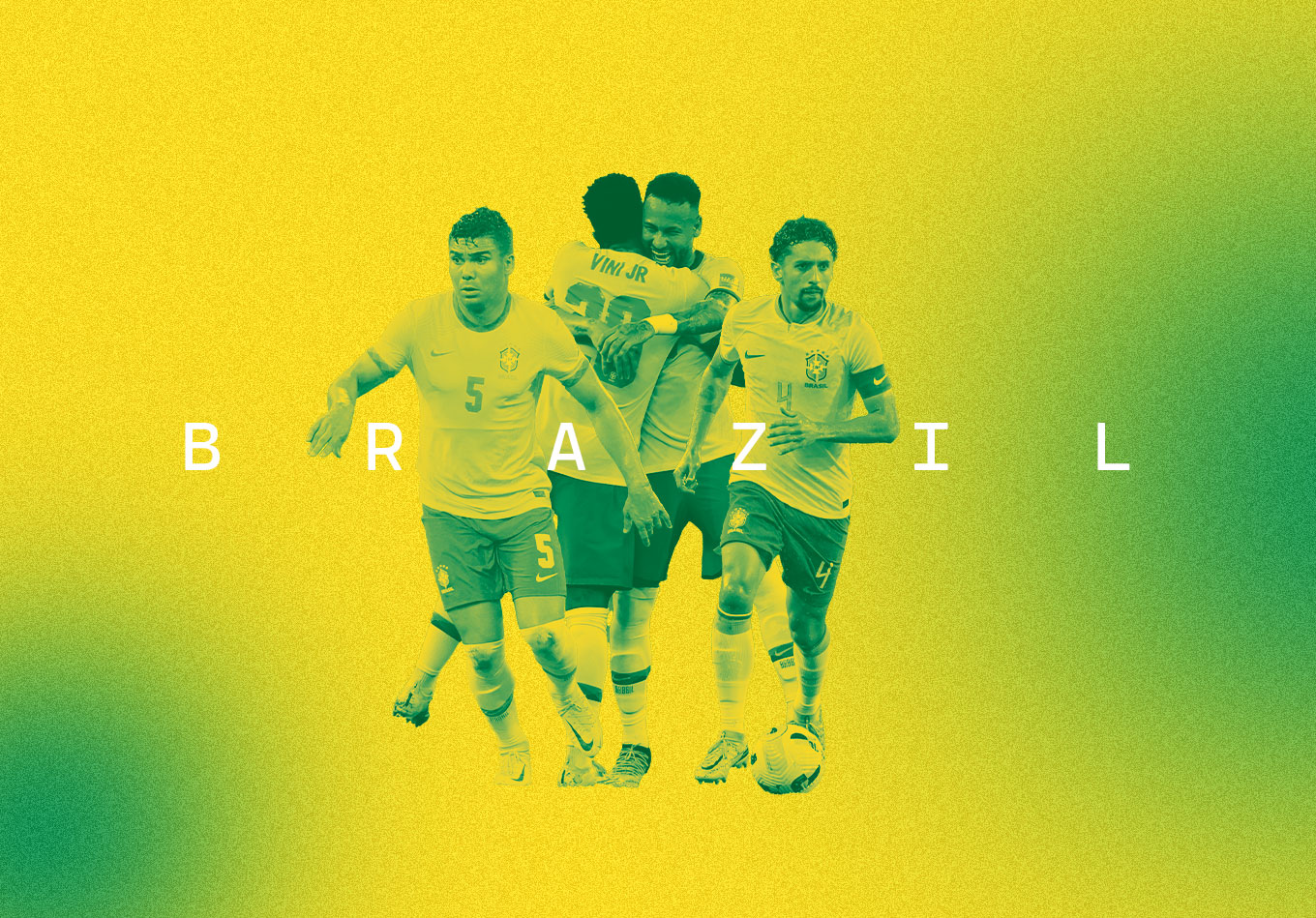When you think of Brazil’s attack, you naturally think of Neymar. The way he glides and slides with the ball as he ghosts past defenders is hard to ignore. With his explosive movement and sharp changes of direction, Neymar has amassed 75 goals in 121 appearances for Brazil and is three behind Pelé (77 goals) for the all-time record. Neymar, just like Pelé, is vying for a World Cup title, but success on the international stage has been harder to come by. At the time of this World Cup, Neymar will be nearly the same age as Pelé was when he retired from international football, trophy cabinet resplendent with three World Cup victories. Neymar still awaits his first. Now, more than ever, he and Brazil will be looking to make a mark.
With Neymar in the form of his life in the French capital –– scoring 15 goals in 20 games and setting up another 11 –– it isn’t far-fetched to suggest he is the reason that Brazil are favourites for the 2022 Qatar World Cup. But while he is Brazil, Brazil isn’t just him.
One could argue that Brazil are favourites simply because of the talent they have on board. In fact, they are stacked in every position. With two of the best goalkeepers in the world in Ederson and Alisson, Brazil are able to initiate and control games with possession. They have the experienced defensive midfielders in Casemiro and Fabinho to disrupt the opponent and win the ball back, and their pick of the pack when it comes to attacking talent available up front. But their favourites tag isn’t just because they have Neymar or the best world-beating talent right now. Instead, it is because Brazil, for the first time in a while, are more than the sum of their parts.
What of Brazil’s main competitors in Qatar? The next logical team to consider would be France, a team brimming with talent but who do have the capacity to fall flat on their faces or crash and burn. Argentina look strong, too. The winners of last year’s Copa América –– who bested Brazil themselves to get there –– Argentina entered the tournament on a 36-game unbeaten run and with the devotion to deliver one last emotional hurrah for their capital Lionel Messi, but fell to one of the biggest shocks in World Cup history in their first game, losing 2-1 to Saudi Arabia.
England? They have a young, talented squad who started brightly against Iran, but whose style of play often sees them struggle against superior opponents. Germany? It has been a long time since they intimidated anyone. Spain go for the throat under Luis Enrique, playing out from the back and pressing teams high up the pitch. To lose against Spain is a death by a thousand passes, but similar to the Germans, they lack a consistent threatening goalscorer.
Predict three questions for Brazil vs. Serbia now for a chance to win $500
You must allow functional cookies to continue.
Brazil, on paper, look like the first among equals. A side able to both rip up defences and keep the ball out of their own net. They averaged the highest possession of any South American (CONMEBOL) team in World Cup qualifying and finished as top scorers. 40 goals in 17 qualification games was an astonishing 13 more than the second-highest scorers, Argentina and Ecuador. The team has only been defeated once in their last 28 outings, and in their last 30 games, they’ve only conceded nine goals.
What makes them so good, you may ask? Let’s take a look…
Brazil’s Style Out of Possession
Let’s begin with how Brazil operate out of possession. Tite typically sets his side up in a 4-4-2 mid-block whose main principle is to remain compact and cut off central passing lanes, while opting against applying high and intense pressure against the opponent’s backline. Their stalemate draw against Argentina in the World Cup qualifiers is a good example of this.
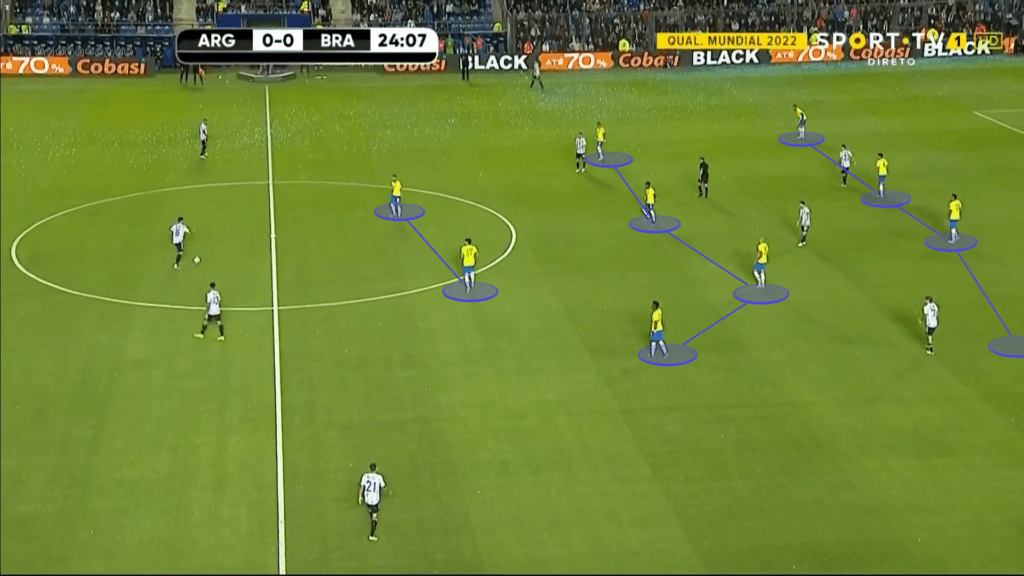
Brazil allow their opponents to have the ball in the wide areas. In fact, the Seleção actively encourage it, ensuring it’s the opponent’s only available option in possession. Another good snapshot of this is Brazil’s 3-0 victory over Ghana in the international friendlies in September.
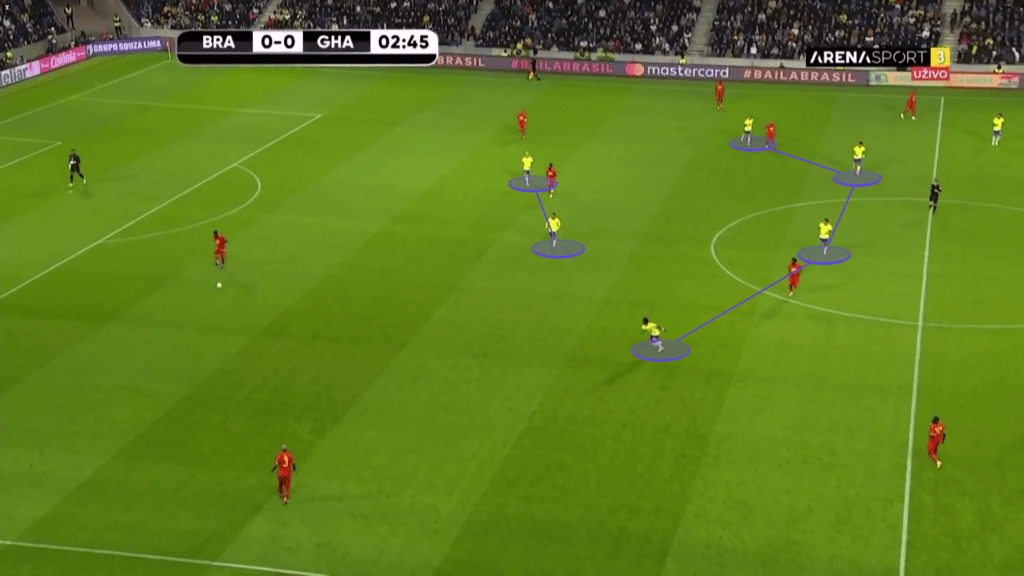
Once the ball is passed to the full-back, this initiates a pressing trigger that pushes players in two different directions. First, the wide midfielder makes a run in behind to prevent any forward passes through the lines. Second, at the same time, the forward makes a run to close down the centre-half to block off the backwards pass.
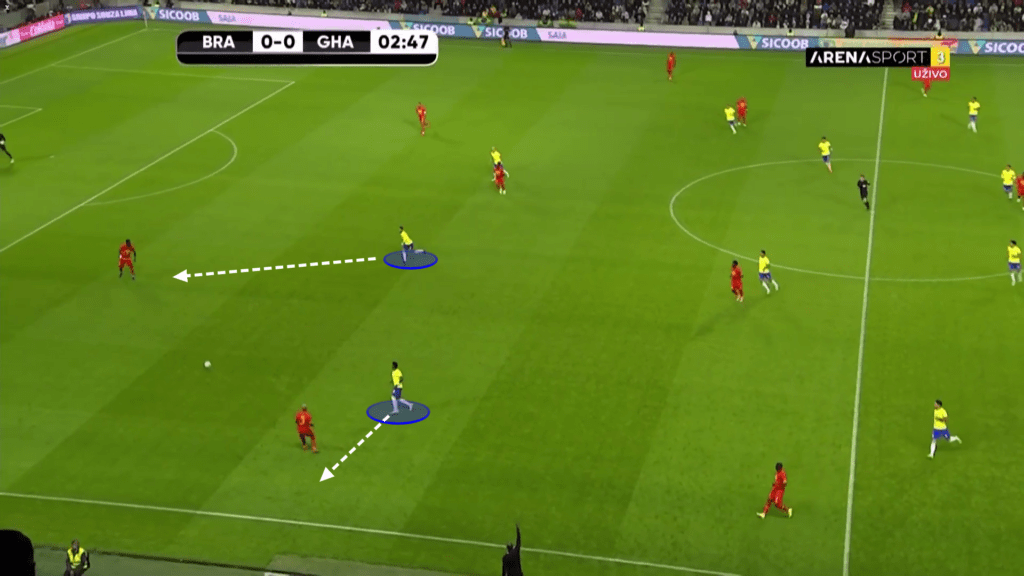
Brazil’s strategy in man-to-man pressing is using angled runs to pin and corner their opponents in their own half.
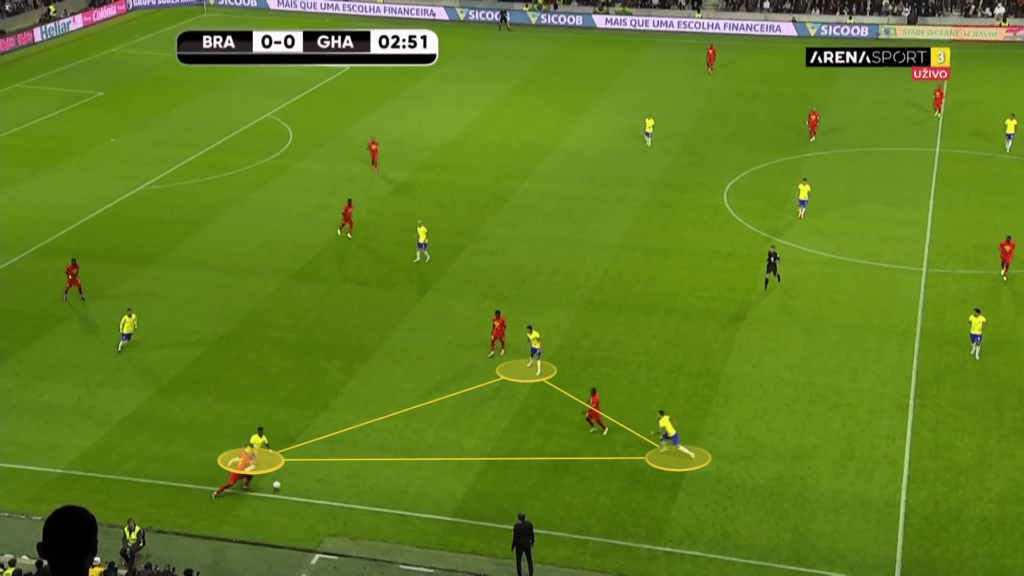
Their philosophy in pressing is what makes them so good defensively. In an international tournament, space is invariably vast, and Brazil’s discipline gives them a distinct advantage. By doing most of the defending in their opponent’s half, they can create offensive transitions that forwards like Neymar and Richarlison thrive on. It’s a strategy that works well with the tireless, aggressive engines in their squad who are exceptionally hard to beat in one-vs-one situations. Only Argentina (8.9) had a lower PPDA than Brazil (9.2) in World Cup qualifying, showing their aggression without the ball.
Brazil’s Style In Possession
This won’t surprise you: Brazil love the ball.
Even more so, the way they move with the ball is focused on fluidity.
Whether they operate in a 4-2-3-1, a 4-4-2 or even a 4-3-3, Neymar is the key ingredient to Brazil’s chance creation. Given the licence and freedom to roam, the spaces Neymar finds himself in are most often on the left flank and in left-half spaces, facilitated by West Ham’s Lucas Pacquetá on the wing. On the other side, former Leeds man Raphinha hugs the touchline on the right to allow Danilo to invert. This setup stretches the opposition’s backline which creates even more space for Neymar to drift into.
Brazil’s shape before scoring the first goal against Tunisia in September’s friendly in Paris highlights this exactly, allowing Neymar to drop deep between the lines to offer a central passing option, as Raphinha and Richarlison make runs in behind the defence.
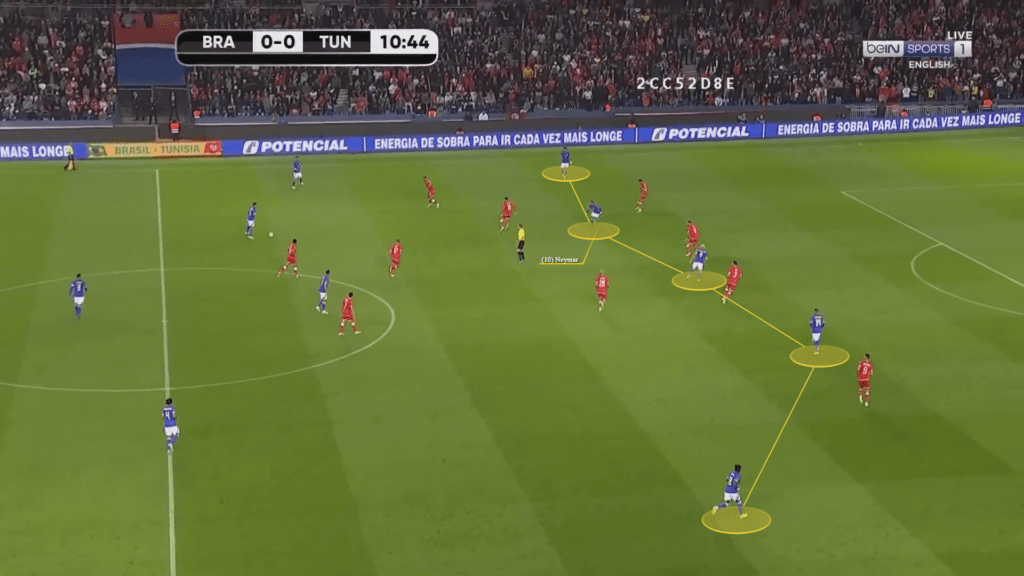
But, even though Neymar is key to their offensive threat, Brazil’s strategy going forward isn’t simply based on the individual brilliance of their star players. Their style in possession features an implementation of modern positional play, ensuring there are players occupying each of the five attacking channels: the flanks, the half-spaces and the central spaces, often forming a five for their last line of attack, as seen in their 4-1 win against Uruguay.
Not only does pushing attacking players forward suffocate the opposition, it also gives them multiple outlets and opportunities to create chances. It can be a ball from deep by Casemiro, it might be Neymar dribbling into the box, it could be Richarlison making a run.
Either way, a balanced combination of structure and freedom allows their offensive players to shine.
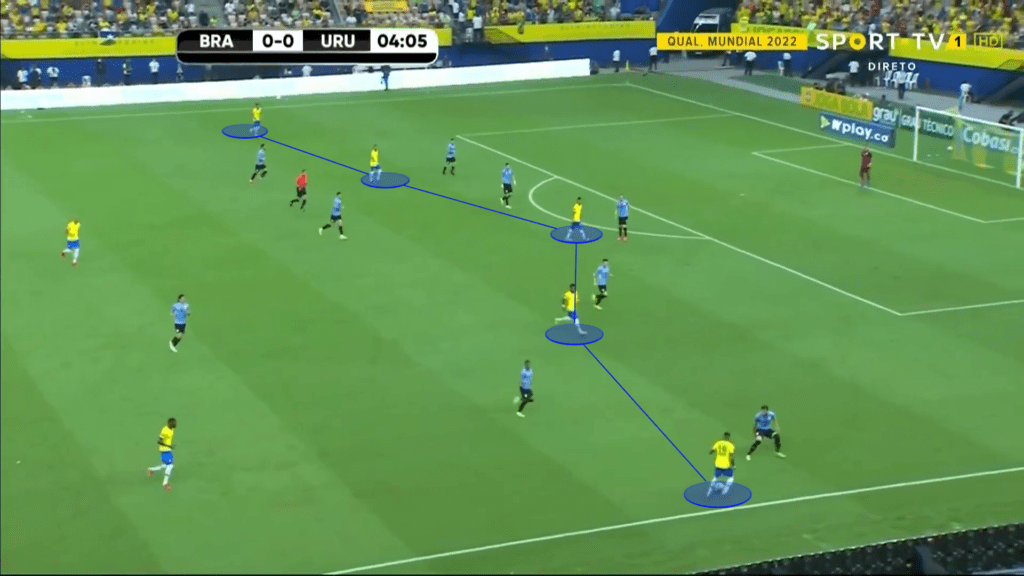
Neymar is the prime example of this. In Brazil’s 3-0 win over Ghana, Neymar had the most assists (two), created the most chances (six) and had the most touches (107) as the graphics below illustrate. Brazil’s shape in possession gets the best out of Neymar, especially with the addition of more talented players to the squad. He can drop deeper to assist build up, move out wide to act as an outlet to create attacks and be a goalscorer himself. He is Brazil’s prime orchestrator.
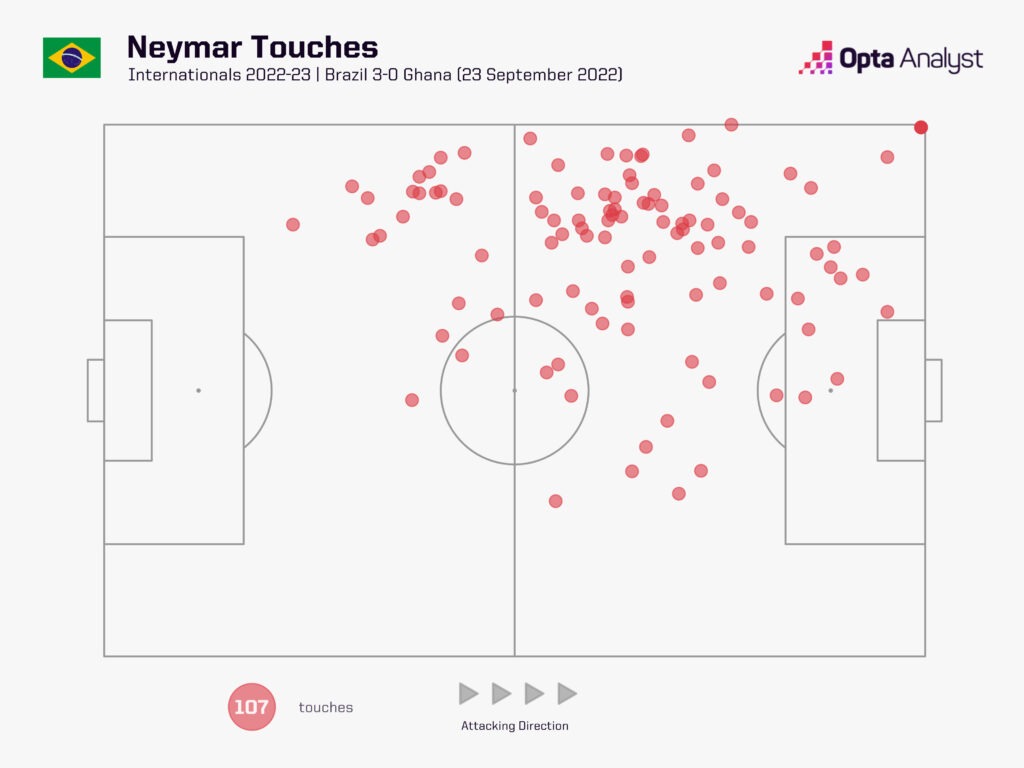
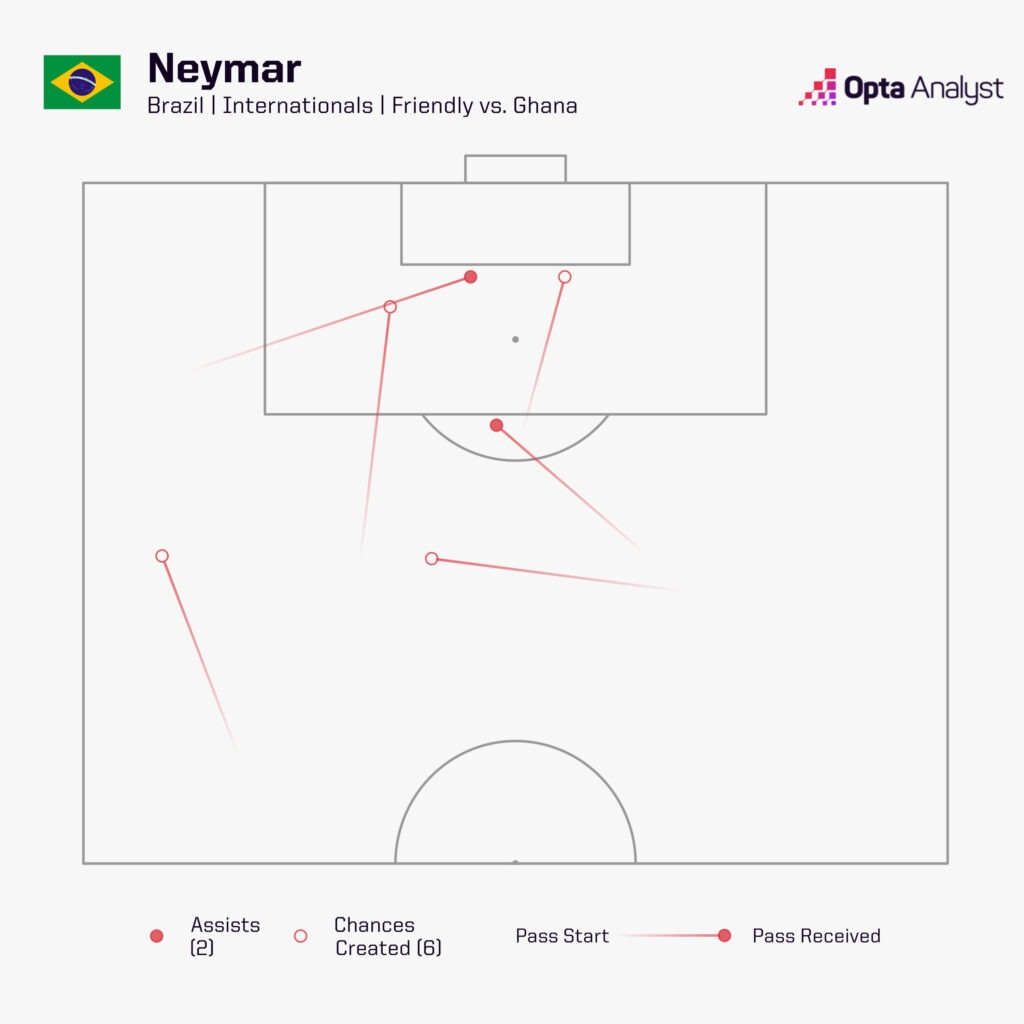
Neymar is also in the form of his life, scoring 11 league goals from an xG value of only 6.3, overperforming expectation by almost twofold. From just 33 shots, the value Neymar creates from each shot means that he doesn’t need much of the ball to blast it into the net. Give him more of it and he’ll only thrive, especially with the way he floods the box. His shot map resembles that of a striker positioned in the box ready in waiting, whereas in reality, he’s also able to pull the strings to create chances for others.
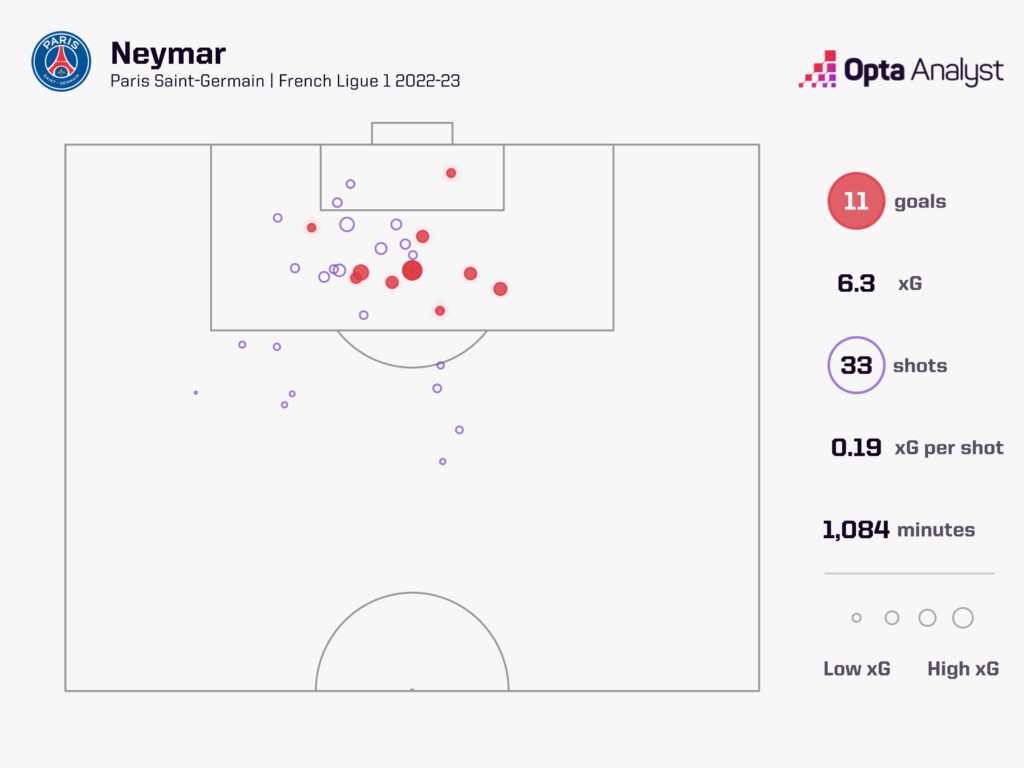
Previously, Neymar bore the burden of both creating chances and scoring goals all by himself but that didn’t prove to be enough. A Brazil without Neymar was even worse, their 7-1 loss against Germany was proof enough. Now, this dependency, while still important, isn’t the only method Brazil with which can penetrate their opponent’s defence.
They have Vinícius Júnior, Gabriel Jesus, Gabriel Martinelli all ready to provide firepower of their own. Vini Jr is known for his adventurous surges into the box as he manoeuvres between defenders to catch the goalkeeper off his guard – and he’s scored three of his six league goals this season following a ball carry. In fact, his 20 shots following a carry is more than anyone else in La Liga this season. His carry map below shows the spaces he likes to attack.
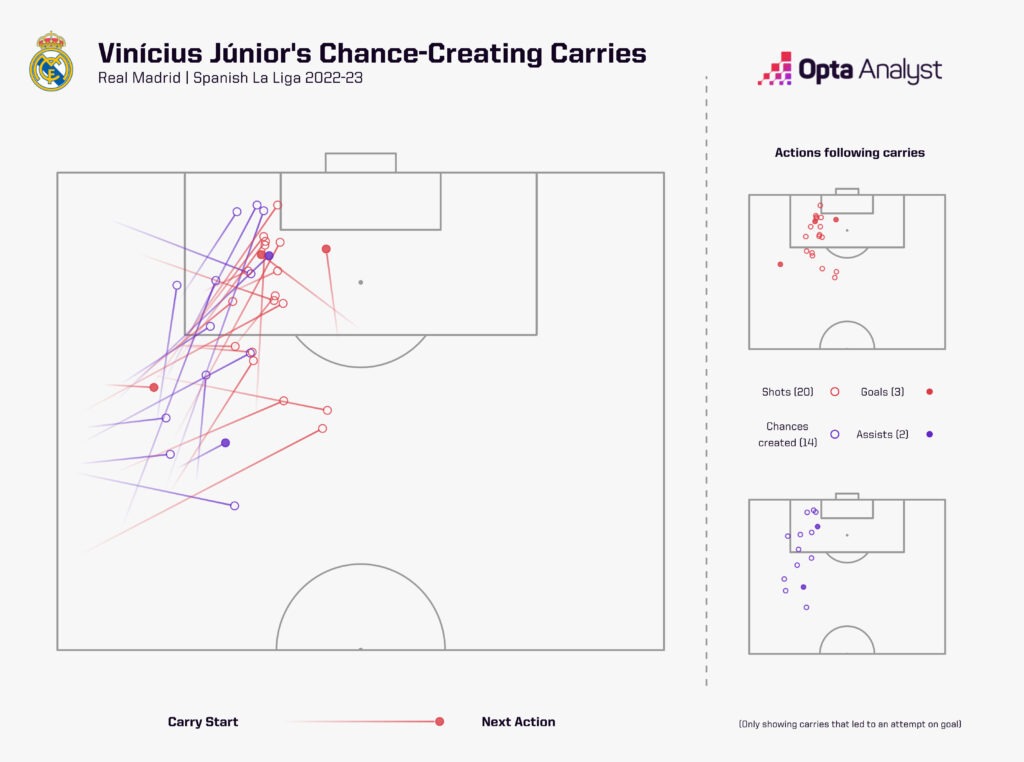
Meanwhile Martinelli and Jesus have found joy at Arsenal, the pair scoring five goals each this season and producing consistent threat in the central areas of the box.
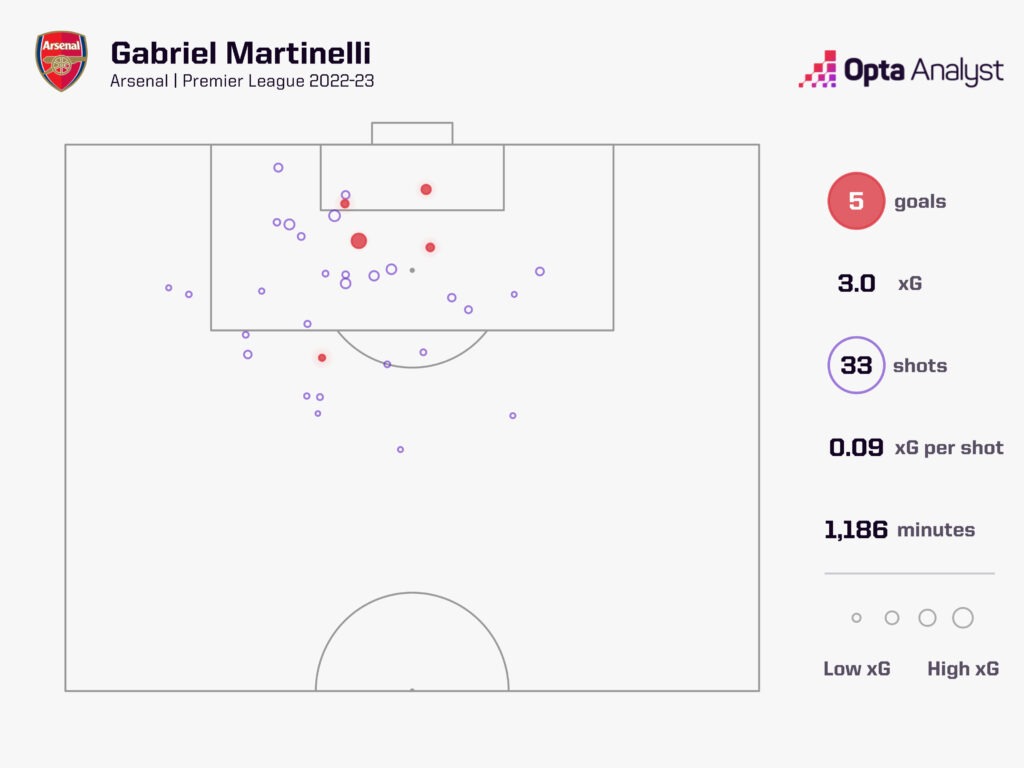
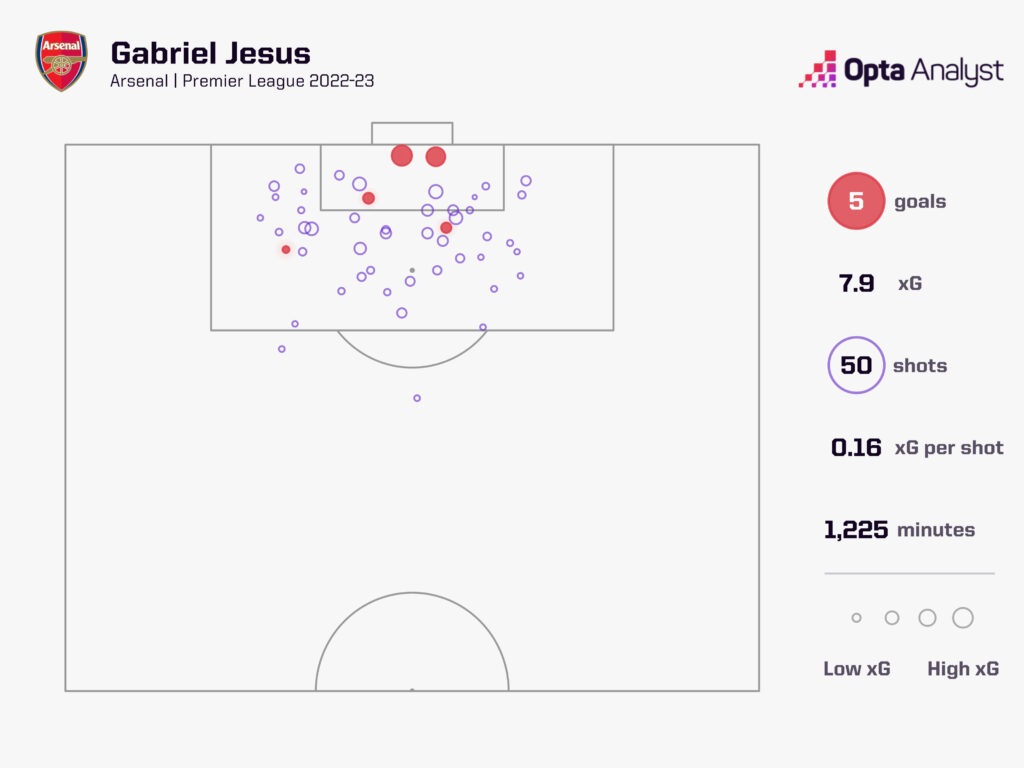
In goal, Brazil have arguably two of the best in the world. And looking at previous World Cup winners, one trend becomes undoubtedly clear: the player in between the sticks makes a difference. Most of the World Cup winners from 1998 onwards feature the Golden Glove winner, and that’s for good reason. An excellent shot-stopper can be the difference between going home or advancing to the final in a competition that lasts a maximum of seven games.
If their talent-filled squad, their form and their domination of possession wasn’t enough, Brazil meet familiar opponents in the group stage. The South Americans face Switzerland and Serbia for the second World Cup in the row with a style of play that directly plays into their hands.
Switzerland’s 4-2-3-1, with a focus on defensive stability and compactness, their low block is exactly what Brazil are so adept at breaking down, especially given the Swiss’ lack of goalscoring threat up front.
Serbia, while they play more adventurously, only kept three clean sheets in their 14 games across World Cup qualifying and the Nations League; a defence that leaves them vulnerable to Brazil’s sharp teeth.
The same can be said for Cameroon, their weakness is their defence. Cameroon’s structure also tends to offer opponents space in the wide areas, leading them to concede a hefty number of chances.
Brazil’s roster is strong and rich in every area and should serve them well as they advance to the knockout rounds, where early momentum could be crucial as the tournament reaches its conclusion. They’ve waited 20 years since last being crowned World Champions but the signs are that title number six could be just a few weeks away.

